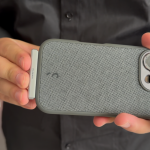Royal Navy
- This summer, British divers helped solve a century-old U-boat mystery.
- Deep-sea diving experts working for the Royal Navy examined a wreck off the English coast.
- They helped confirm the sub’s identity and that of a sub found near France, both sunk during World War I.
Deep-sea diving experts working for the British Royal Navy recently helped submarine historians solve a century-old U-boat mystery, drawing on their past military experience and teamwork to do so.
In 2004, a World War I-era German submarine was discovered at the bottom of the English Channel. Experts narrowed its identity to one of two U-boats, but until this summer, nothing had been confirmed.
An expedition in June was organized by deep-sea diver Steve Mortimer, his wife, Barbara, and Michael Lowrey, a US-based naval historian. They enlisted the help of a larger crew, including two Royal Navy civil servants and diving experts: Dr. Fran Hockley and Dominic Robinson, a retired Army Air Corps lieutenant colonel.
At the time, Robinson and Hockley taught UK service members to dive recreationally at the Navy’s Joint Service Sub Aqua Diving Centre in Devonport Dockyard, part of the British military’s adventure training program.
Robinson himself learned to dive in such a program while flying military helicopters in Germany at the time of the first Gulf War.
“If you’ve encountered risk in a safe and controlled environment, then when you encounter it in a more challenging [environment], you’re better able to cope with it,” he said.
Which U-boat is it?
Dominic Robinson
Robinson has participated in many dives of military or historical importance, but this one was different, he told Insider.
When U-boat experts found the wreck in 2004, they were convinced it was one of two German diesel-powered attack submarines: U-93 or U-95. The problem was that French divers had discovered a similar wreck near the Port de Calais in 2003.
Both subs had prowled the waters around England in 1917 and 1918, during the German U-boat campaign known as the First Battle of the Atlantic.
The sub the French found had its stern blown off, but date markings on its propeller led historians to believe it was U-95, said Lowrey, who has helped identify about a dozen submarine wrecks and contributes to the website Uboat.net.
Dominic Robinson
After the second wreck was found off the Lizard Peninsula, the English mainland’s southernmost point, dives were done to identify it in 2004 and 2006. Neither was successful due to poor video quality and because the diving units didn’t have equipment to scrub the propeller, Lowrey told Insider.
“The purpose of the [June 2021] dive was, let’s identify this wreck,” Lowrey said. “Let’s just … once and for all resolve it.”
The English Channel has an average depth of just over 200 feet, and specialized gear, such as dry suits, is required to dive so deep for lengthy durations.
Robinson and Hockley are both certified to use a rebreather, which recirculates the gas a diver exhales, allowing some or all of it to be recycled. Diving with a rebreather is typically more complicated than open-circuit diving, in which exhaled gas exits into the water, but it allows divers to stay deeper for a longer period of time.
Robinson and Hockley were given the key task of scrubbing the submarine propeller with large Brillo pads in search of dates to identify the wreck. “That’s not seen as a glamorous job, but it’s the important one,” Robinson said.
Prime diving conditions
Dominic Robinson
Deep-sea conditions can vary widely on these types of dives. Luckily they were “absolutely stunning” on this dive, Robinson told Insider. The team easily identified the submarine’s stern side, located the propeller, and scrubbed until the markings appeared.
The date on the propeller convinced the team that the boat off the Lizard was in fact U-95 and that the boat closer to the French coast was U-93, Lowrey said.
The team still dived for a second day to double-check the numbers and try to identify the cause of the sub’s sinking.
Using a technique called photogrammetry, a team member created a 3-D model based on the videos filmed underwater. Those models were then shared with experts to examine. “There was a suggestion that it was rammed,” but even after several months of analysis, no conclusion was reached, Robinson said.
The crews of both U-93 and U-95 were lost when the subs were sunk, according to the Royal Navy. Solving these longstanding mysteries can help provide closure to their families, Robinson and Lowrey said.
Since many of the most obvious submarine wrecks have already been catalogued, it’s increasingly difficult for experts to positively identify the remaining U-boats, and Lowrey expressed relief at finally solving this years-long mystery.
“Sometimes it’s like a detective novel with the last 10 pages ripped out, where you think you know who did it, but you’ll never be able to prove it,” Lowrey said.
Help from a military background
Dominic Robinson
Robinson’s past in the Army Air Corps – where he flew anti-tank, scouting, and counterterrorism helicopter missions – has served him well in deep diving expeditions, teaching him to be disciplined about the key tasks and meticulous with his equipment.
“If you’re at 80 meters and your rebreather stops working, that’s quite a dangerous place to be in,” he said.
Having a teammate on a dive like Hockley, who also works in a military environment, gives Robinson an extra sense of security. “I love diving with her, because I know she’ll be there when I need her,” he added.
These historical dives are privately funded by the crew but can aid their work for the British military, Robinson said. The Joint Service Sub Aqua Training Centre may not offer a rebreather course, but the recreational divers can still benefit from Robinson’s depth of experience.
“We work for the Royal Navy, but the [diving] we do privately does roll into our job,” Robinson said.
Dominic Robinson
In late October, Robinson left the center to become the new head of diving and training for the British Sub-Aqua Club, the UK’s national governing body for recreational diving.
For British military divers, there will be fewer opportunities to get dive training next year. The diving training centre is expected to close in the spring, as the Ministry of Defense reassesses its budget.
A Ministry spokesperson said the timing of the closure is not finalized and that British Armed Forces will still be able to dive at facilities such as the Boot Camp and Military Institute.
“We have the biggest defence budget in Europe and are one of very few countries to not only meet but exceed NATO’s 2% spending target,” the spokesperson said in an email. “In the face of intensifying threats, we are contributing to the cross-government review of national security capabilities and looking at how we best spend the rising defence budget to protect our country.”
Vivienne Machi is an award-winning reporter based in Stuttgart, Germany. Her writing has appeared in outlets including Foreign Policy, Defense News, the Counter, and Via Satellite. Twitter: @VivienneMachi
Powered by WPeMatico





